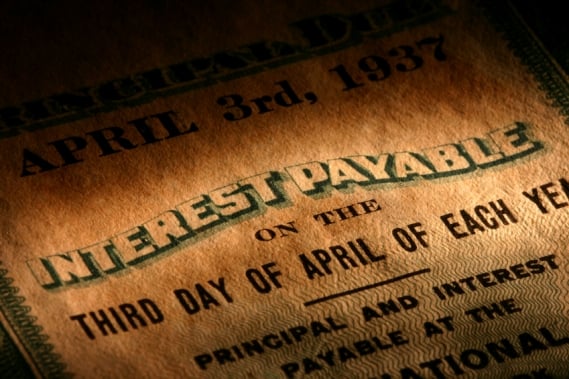The $3.7 trillion municipal-bond market in 2012 is unlikely to repeat this year's return of 10.7 percent, the best since 2009, as yields rise from record lows, borrowing increases and budget deficits persist, according to strategists at Franklin Advisers Inc. and Morgan Stanley.
“To expect municipal bonds to return 10 percent or more every single year is unrealistic,” said Rafael Costas, co- director of municipals at San Mateo, California-based Franklin Advisers, which manages $72.4 billion of the debt. “We'll take the good years; we also have to take the tough years.”
The “unprecedented volatility” of Treasuries will lift tax-exempt rates next year, John Dillon, Morgan Stanley's chief strategist, said in his 2012 outlook. “Partisan spats” in Congress will delay aid to states, Natalie Cohen, Wells Fargo's head researcher, said in hers. Localities dependent on federal money will be affected by U.S. belt-tightening, said JPMorgan Chase & Co. analyst Peter DeGroot.
Municipal bonds returned more than Treasuries, corporate debt, commodities and stocks this year as governments lowered spending, trimmed jobs, cut retirement benefits and raised revenue to close more than $325 billion of state deficits created by the longest recession since the 1930s.
The yield on top-rated 10-year tax-exempts fell to 1.87 percent today, the lowest since the Bloomberg Valuation Index began in January 2009.
As third-quarter tax collections rose 4.1 percent, the eighth-straight increase, according to the U.S. Census Bureau, the prediction by bank analyst Meredith Whitney in December 2010 of “hundreds of billions of dollars” of defaults proved false.
RELATED ITEM Meredith Whitney was wrong — or was she? »
Missed bond payments fell to $2.6 billion this year, not including those related to AMR Corp.'s bankruptcy, from about $2.8 billion in 2010, according to Matt Fabian, a managing director at Municipal Market Advisors in Concord, Massachusetts.
The market also endured the bankruptcy filings of Harrisburg, Pennsylvania, and Jefferson County, Alabama, the largest for a government in U.S. history. The yield on 10-year municipals plunged to a record low 1.87 percent on Dec. 21, the least since data compiled by Bloomberg began in January 2009.
“The tax-exempt market has indeed overcome a litany of challenges,” Dillon wrote in his report.
The 10.72 percent return on municipal bonds through Dec. 23 is the second best since 10.73 percent in 2002, according to Bank of America Merrill Lynch indexes that track prices and interest income. The 14.5 percent of 2009 was the most of the decade.
Beating Others
Munis beat the 8.9 percent return of Treasuries and the 6.2 percent of company debt, the Merrill indexes show. Commodities in the Standard & Poor's GSCI Spot Index have risen 2.2 percent this year and the S&P 500 stock index has gained 0.61 percent.
Boosting munis this year was a decline in borrowing as governments put off spending and the federally subsidized Build America Bonds program expired. Issuance fell to $285 billion from $407.7 billion in 2010, according to Chris Mauro, head of municipal strategy at RBC Capital Markets in New York.
RELATED ITEM 10 hottest muni funds in 2011 »
Next year, supply will rise as much as 20 percent, Morgan Stanley's Dillon said, and the market will be subject to “the potential for rising interest rates and related volatility, courtesy of the U.S. Treasury market.”
Investors fleeing the threat of European bond defaults drove down the yield on 10-year Treasuries to 1.67 percent on Sept. 23, the lowest since at least 1962, when data compiled by Bloomberg begins. That pushed up the 10-year tax-exempt yield as a percentage of the U.S. yield to 123.4 percent on Oct. 6, the highest since April 2009.
Below 100
The ratio fell to 92.8 percent on Dec. 23 as 10-year Treasury yields touched the highest in more than a week on reports the economy is strengthening. Dillon sees the ratio staying below 100 percent next year as munis underperform.
Tax-exempt bonds “do not experience global flight-to-quality flows,” Dillon wrote.
Talk in Washington to reduce the tax exemption on muni-bond interest also “makes it unlikely that municipal ratios will revisit the 84 percent long-term average,” Dillon said.
President Barack Obama proposed cutting the tax break in September to increase revenue and reduce the budget deficit. Republicans in Congress opposed the idea, adding to partisan splits on issues such as health-care spending and taxation that influence public finances, said Wells Fargo's Cohen.
“The standoff will keep major policy issues that affect state and local governments off the table until next year's election,” she wrote. “This climate makes it difficult for state and municipal governments to predict future revenues.”
Four states -- California, New York, Missouri and Washington -- reported mid-year budget gaps, Cohen wrote, citing the National Conference on State Legislatures.
Fiscal issues also “will continue to pressure local, smaller, weaker issuers,” she said.
Lower Ratings
About five municipal ratings were lowered for every one upgraded in the third quarter, the largest margin since the 2008 financial crisis, Moody's Investors Service said Nov. 1. More than 100 local governments and school districts were cut as the depressed housing market reduced property-tax revenue, it said.
Bonds of governments dependent on military spending and federal grants may be affected by forced budget cuts beginning in 2013 from the failure of Congress to agree on ways to reduce the deficit, JPMorgan's DeGroot said.
The U.S. cutbacks will curb economic growth, which is also vulnerable to a contraction in Europe, he said.
--Bloomberg News--







